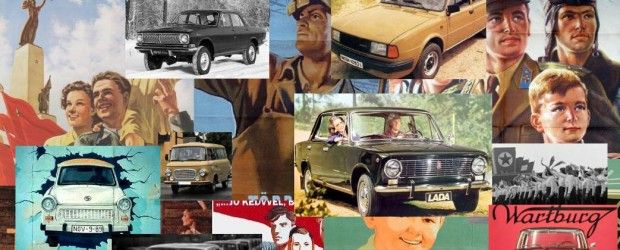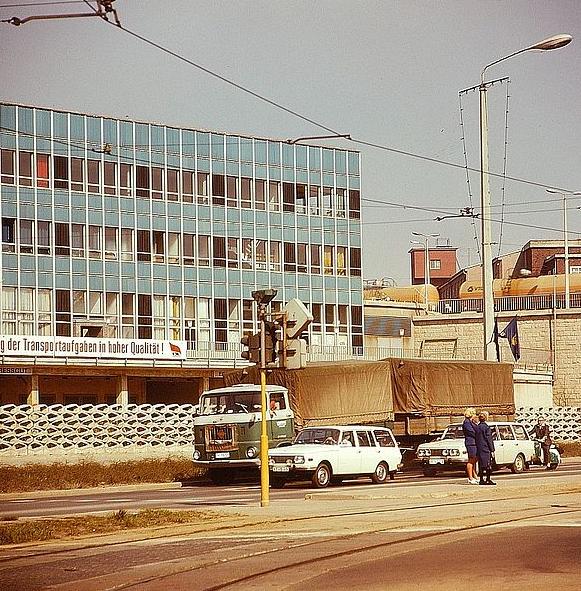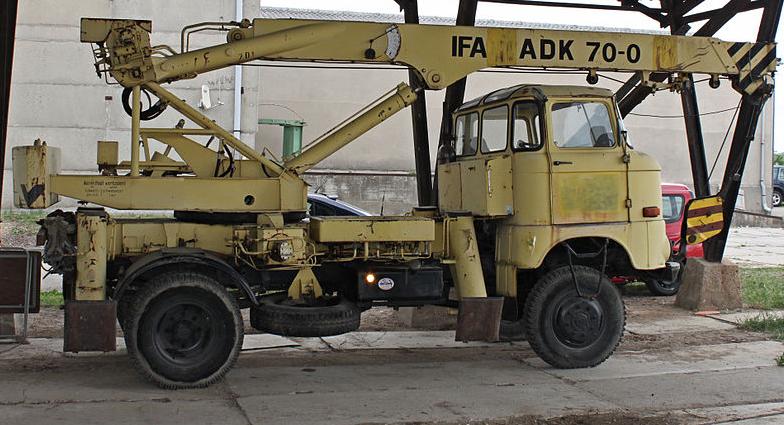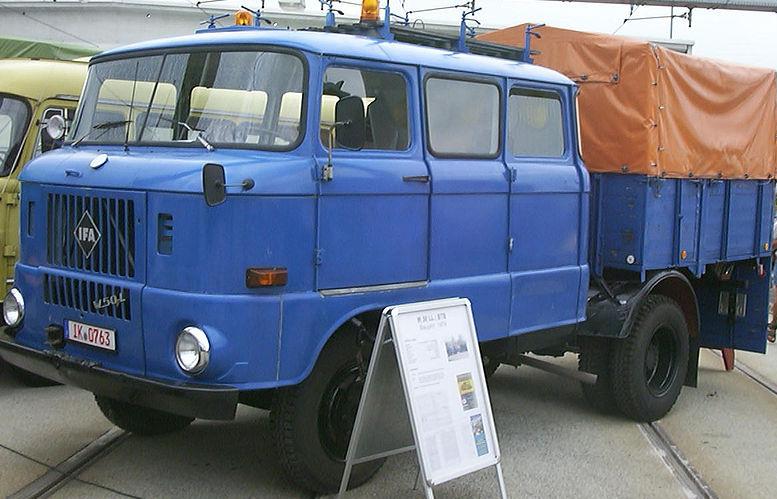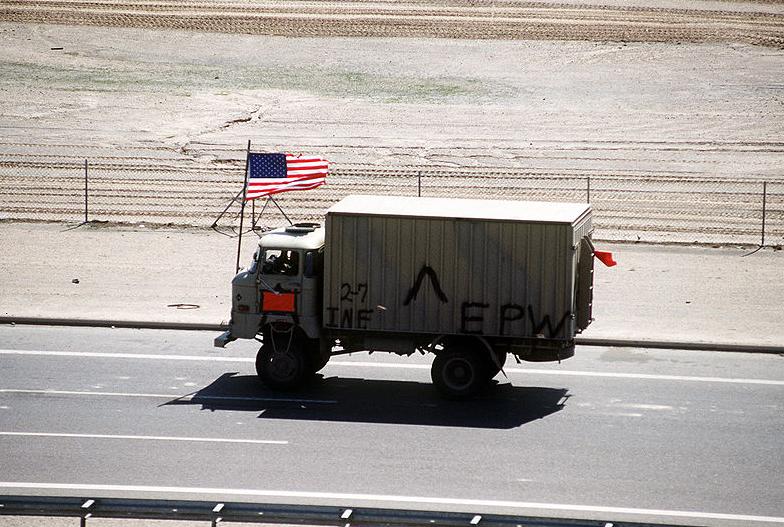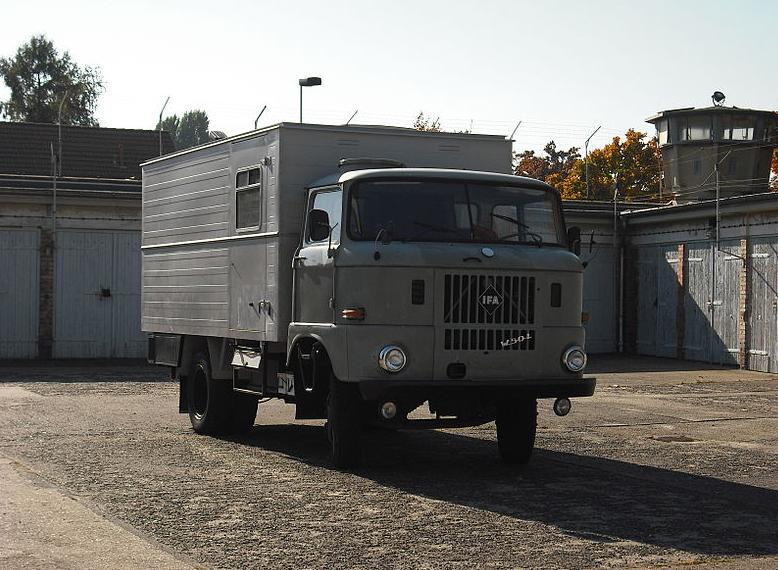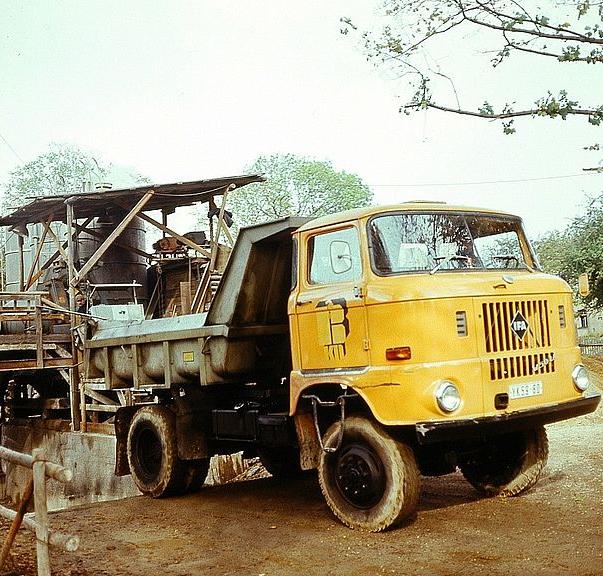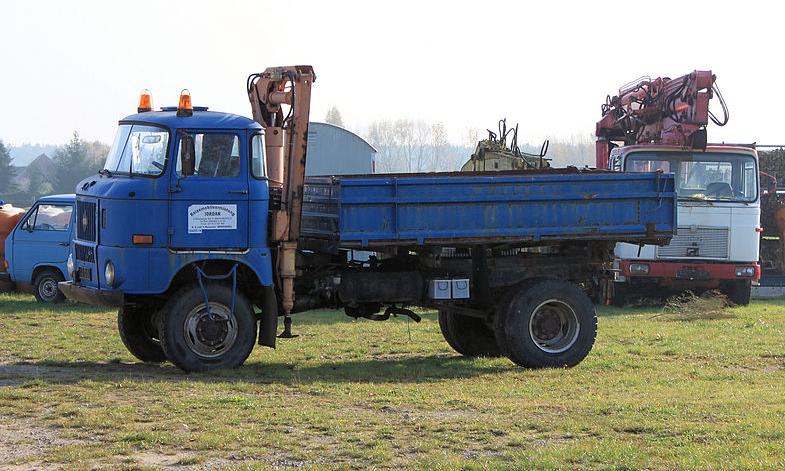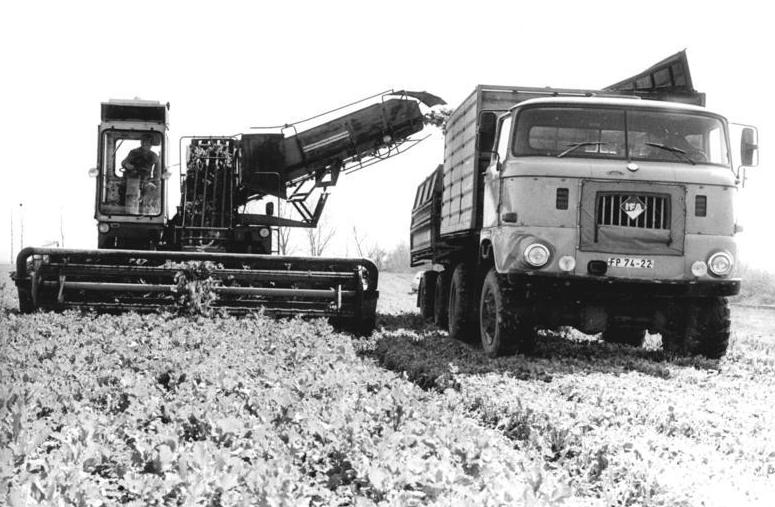The W50 (50 Werdau dt) is built in the GDR 1965-1990 multipurpose trucks the automotive industry association (IFA). A total of 571 789 vehicles of this type were built. The production took place at the automotive plants Ludwigsfelde, but special vehicles also came from other companies.

History
The end of 1958 started in the automotive business, "Ernst Grube" Werdau work on a successor to the IFA S4000-1. In 1961 there was a first prototype, 1962, under the name of "W45", which already corresponded largely to the series model. However, production was started in 1965, there was an increase in the load required to five tons. Due to the planned production figures also had a new plant to be built, since the capacity in Werdau not sufficient. Thus, the W50 was not then built in Werdau, but in Ludwigsfelde.
Produktionsprogramm W50 (Stand um 1970)
Many other variants arose at the customer with partners such as:
VEB IFA Karosseriewerke
VEB special vehicle factory in Berlin-Adlershof
VEB fire extinguishers work Luckenwalde
VEB Kraftfahrzeugwerk "Ernst Grube" Werdau
VEB rationalization of public utilities Dessau
PGH five towers in Halle (Saale)
PGH good trip Guben
PGH vehicle Kakerbeck
From E. Mill Söhne KG, Lobau / Saxony
From Schneider KG, Reichenbach im Vogtland
Body Shop Winter KG, Zittau / Saxony
The W50 was the most significant trucks of the GDR. He has been in 60 different basic models manufactured (trailer, box trailer, military, firefighters, suitcases, etc.). [1] In addition to the standard cab (two doors, two seats), there was an extended cab (two doors, four seats or two seats and two sofa beds) and two long-cab variants (four-door, six or ten seats). The latter were often fitted with fire and Bautruppfahrzeugen. There were also two different wheelbases available: the short of 3,200 mm and 3,700 mm long with. However, this was only in the embodiments forwarding trailer, truck mounted crane, long cab, luggage and furniture in the fire service vehicles. For military vehicles, a skylight was installed in the cab on the passenger side, the centrally located roof of the flap civil cab was accounted for. For special bodies such as sweepers and some export markets RHD were offered.
The W50 was powered by a four-cylinder four-stroke diesel engine (designation: 4VD 14,5 / 12-2 SRW) the engine plant in Nordhausen with 6,560 cc displacement and an output of 91.94 kW (125 hp) at 2,300 rpm. In addition to the rear-wheel drive and a (W50-LA) was available. The permissible trailer load was t 10th Specifically for agricultural use, there was the W50 LA / Z (tractor). This had a maximum trailer load of up to 16 tons, which had the advantage that could be driven especially in the harvest season with two trailers. Specific use and low-pressure balloon tires were provided in addition to the standard tires. With four-wheel drive the W50 had a high-road, which is very suitable for areas with poor transport network and routes loose terrain made him both in mountains, jungle and desert. (Its climbing ability showed the W50 at a test screening in 1968 in Népstadion of Budapest, as the test driver drove up to the vehicle the stairs of the bleachers without problems up to the upper ground edge.) [1] In addition to that, the vehicle serviced with personnel with little training and could be repaired.
The W50 in various Eastern European and African countries (such as in Czechoslovakia, Soviet Union, Romania, Hungary, Bulgaria, Nicaragua, Poland, Vietnam, Ethiopia, Angola and Mozambique) has been exported to more than 40 countries in 240 country-specific models. [1] he was long after the end of its production of the street scene or heard it today. Even in Iraq (particularly in military variants during the Second Gulf War), he was in use. The export rate in the eighties up to 70 percent. The remainders (more than a thousand vehicles) were sold in the 1990s by an entrepreneur in Holy Sepulchre world yet. Vietnam also completed at that time on its holdings of W50, which are more in daily use.
The focus on export led to the lack of vehicles in the GDR, so military vehicles were originally used by the military or not exported used later in the economy. These vehicles could be easily detected on the roof hatch on the passenger side and were often to be seen.
Fire
In Germany, specifically East Germany, the W50 is still in use by firefighters. These are mostly the W50 Löschgruppenfahrzeug LF 16 TS 8, the Tanklöschfahrzeug TLF 16/25 or 16 TLF GMK and the ladder DL30/01.
Many vehicles used in large fire departments were after a 25-year period GDR-generation fire truck still in good condition and well maintained because of lower compared with civilian used vehicles operating hours and could be taken over priced by smaller fire departments.
Roduktionsprogramm W50 (as at 1970)
Many other variants arose at the customer with partners such as:
VEB IFA Karosseriewerke
VEB special vehicle factory in Berlin-Adlershof
VEB fire extinguishers work Luckenwalde
VEB Kraftfahrzeugwerk "Ernst Grube" Werdau
VEB rationalization of public utilities Dessau
PGH five towers in Halle (Saale)
PGH good trip Guben
PGH vehicle Kakerbeck
From E. Mill Söhne KG, Lobau / Saxony
From Schneider KG, Reichenbach im Vogtland
Body Shop Winter KG, Zittau / Saxony
The W50 was the most significant trucks of the GDR. He has been in 60 different basic models manufactured (trailer, box trailer, military, firefighters, suitcases, etc.). In addition to the standard cab (two doors, two seats), there was an extended cab (two doors, four seats or two seats and two sofa beds) and two long-cab variants (four-door, six or ten seats). The latter were often fitted with fire and Bautruppfahrzeugen. There were also two different wheelbases available: the short of 3,200 mm and 3,700 mm long with. However, this was only in the embodiments forwarding trailer, truck mounted crane, long cab, luggage and furniture in the fire service vehicles. For military vehicles, a skylight was installed in the cab on the passenger side, the centrally located roof of the flap civil cab was accounted for. For special bodies such as sweepers and some export markets RHD were offered.
The W50 was powered by a four-cylinder four-stroke diesel engine (designation: 4VD 14,5 / 12-2 SRW) the engine plant in Nordhausen with 6,560 cc displacement and an output of 91.94 kW (125 hp) at 2,300 rpm. In addition to the rear-wheel drive and a (W50-LA) was available. The permissible trailer load was t 10th Specifically for agricultural use, there was the W50 LA / Z (tractor). This had a maximum trailer load of up to 16 tons, which had the advantage that could be driven especially in the harvest season with two trailers. Specific use and low-pressure balloon tires were provided in addition to the standard tires. With four-wheel drive the W50 had a high-road, which is very suitable for areas with poor transport network and routes loose terrain made him both in mountains, jungle and desert. (Its climbing ability showed the W50 at a test screening in 1968 in Népstadion of Budapest, as the test driver drove up to the vehicle the stairs of the bleachers without problems up to the upper ground edge.) In addition to that, the vehicle serviced with personnel with little training and could be repaired.
Versions
